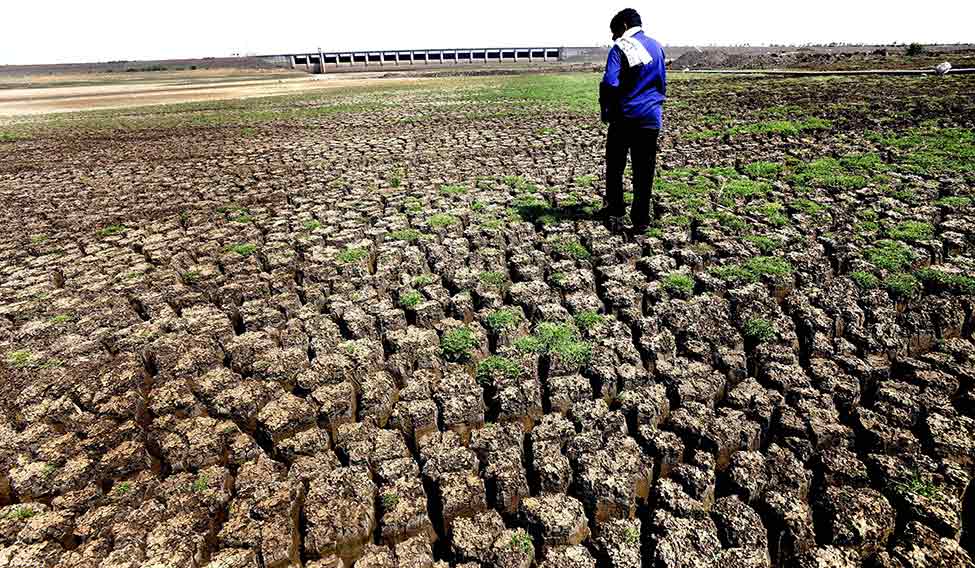Millions of years ago, land and sea configured to create a beautiful symphony, the monsoon. This annual phenomenon drenches Africa and Australia, too, but it’s on the Indian subcontinent that the monsoon casts a spell. It comes calling in early June, and spreads across the landmass, quenching thirst of soil and soul alike. It brings felicity to tired Deccan rivers, ferocity to Himalayan ones. It awakens dormant fields. It brings life to India.
In India, the monsoon is more than a seasonal phenomenon; it’s an emotional event. Everything is hinged on these rains, from economic growth to political future and spiritual wellbeing. But the monsoon is a moody lover. It can make an anxious nation wait while it decides to delay its arrival. It could sometimes arrive with military punctuality, but then, whimsically decide not to empty its clouds over the landmass, leaving behind cracked fields and inspiring songs like Kaale badra paani to barsaa. At times, it moves at a languid pace, and on other occasions, it charges with mindless fury. Sometimes, it takes sadistic pleasure in lashing relentlessly, sweeping away entire hillsides and flooding rivers. Despite all the science, time, money and mind that goes into the business of forecasting it, the monsoon remains unpredictable in its behaviour.
The Indian Meteorological Department (IMD), the butt of many jokes through the decades for its hit-and-miss monsoon predictions, launched the National Monsoon Mission some years ago to come up with better models of prediction. To its credit, IMD forecasts have become more reliable of late (it predicted deficient rains last season) but no agency can yet dare to claim it has decoded the mind of the monsoon.
The monsoon is not the simple resultant of land heating up during summer, creating a low pressure into which rain laden clouds rush in from the sea. It’s more complex than a woman’s mind, and collective research over the last one hundred years shows that almost every geographical event on earth has an impact on the monsoon’s behaviour. Winter snow in Eurasia, Himalayan snow, changes in Arctic ice, surface temperatures over Pacific waters, strengthening of warm currents like El Nino and a myriad other events decide how the monsoon will act out. “The monsoon is dynamic, and is ongoing, stretching over three months. There are so many variabilities built into it that forecasting its behaviour is always a challenge,’’ says G.P. Sharma of Skymet, a private forecasting agency. Again, it is an ocean phenomenon, not a land one, and though we have sensitive ocean buoys now, the sea is more mysterious than land.
 Mystery season: The monsoon may sometimes refuse to empty its clouds, leaving behind cracked fields and worried farmers | Janak Bhat
Mystery season: The monsoon may sometimes refuse to empty its clouds, leaving behind cracked fields and worried farmers | Janak Bhat
The science of forecasting is one issue, the politics another. A politician had once said the Indian budget was a gamble in the hands of the monsoon. So, earlier, there was a general reluctance in announcing a bad forecast and plunging the country into despair even before the first rain, says Sharma. It was prudent to couch the bad news in such comforting terms that only the discerning understood its real import. Times have changed. With better models, not only has forecasting got refined, but India, too, has developed resilience. “We have had two consecutive bad monsoons, but the country has managed to absorb the event, thanks to better irrigation and a robust economy than before,’’ he says. “So forecasters can be brave with their predictions.’’
Also, the entry of private forecasters has created healthy competition and right now, agencies are patting themselves on their backs for their accurate prediction of this year's delayed arrival of monsoon. But that’s just one prediction. How the monsoon behaves over the next few months is another story altogether. “No two monsoons have been alike in the last one century,’’ says Sharma. So, despite all the tools, we can, at best, make logical guesses, he adds. The monsoon is capable of throwing up a surprise, anytime, anywhere. After all, it has a reputation to maintain.







